I suspect Gene Rosenthal will roll his eyes at the obviousness and artlessness of this observation, but let history officially note: In 1966, when Eric Clapton and company were reviving Skip James‘ “I’m So Glad” for Cream’s debut album (which enjoyed worldwide distribution – even Saudi Arabia, unofficially), Rosenthal had already recorded the pioneering blues guitarist two years prior — James’ first recordings since the Depression — at his parents’ house in Silver Spring, Maryland!
Adelphi Studios – Original Site
516 E. Indian Spring Drive = Silver Spring, MD
 Thus, Gene’s Adelphi Studios helped to put Silver Spring on the world’s musical map before Track Recorders had even opened its doors, while Rosenthal’s audio engineering skills would help draw attention to such other “rediscovered” blues artists as Mississippi John Hurt, Bukka White, Johnny Shines, David ‘Honeyboy‘ Edwards, Big Joe Williams, Furry Lewis, and Gus Cannon, as well as emerging local guitarist, “Takoma” John Fahey.
Thus, Gene’s Adelphi Studios helped to put Silver Spring on the world’s musical map before Track Recorders had even opened its doors, while Rosenthal’s audio engineering skills would help draw attention to such other “rediscovered” blues artists as Mississippi John Hurt, Bukka White, Johnny Shines, David ‘Honeyboy‘ Edwards, Big Joe Williams, Furry Lewis, and Gus Cannon, as well as emerging local guitarist, “Takoma” John Fahey.
Rosenthal, as some blues enthusiasts might tell you, was part of a so-called “East Coast Blues Mafia” of non-conformists and free-thinking types who took an activist approach toward revitalizing the careers of forgotten American blues artists. This group of renegades would include Fahey and Bill Barth (who tracked down Skip James), Ed Denson (who relocated Bukka White, with assistance from Fahey), Dick Spottswood and Tom Hoskins (who used the lyrics of “Avalon Blues” to locate Mississippi John Hurt), along with Michael Stewart, Henry Vestine, Max Ochs, Stefan Grossman, Nick Perls, and others who collectively sought out blues, country, folk and other “primitive” sounds (i.e., simple, therefore “unsophisticated”) decades before the rest of America would catch on to the notion that ‘simple’ can convey a power that often eludes more athletically-gifted musics with fancy time signatures and such.
Gene Rosenthal –
“Beloved abroad, but underappreciated at home” is a common theme that runs through the history of the arts and one that would ring true to some extent, at least initially, for Adelphi Records. As Billboard would note nearly 40 years ago in its December 24, 1977 edition, “The label is another example of small American record manufacturers finding a greater response for its artists abroad.”
And yet Adelphi Records is still very much a vital concern some 48 years later, having signed a new artist — Ken Swartz & the Palace of Sin, who recorded an album in New Orleans, Smile Away the Blues — and inked a major deal with respected Oxford, Mississippi-based indie label Fat Possum to acquire Rosenthal’s vaunted “Blues Vault,” from which it has assembled Worried Blues, a ten-album series that features rare and previously out-of-print recordings on vinyl, CD, and digital download (released July 21).
Zero to 180 notes an independence of spirit in Rosenthal, whose label remains one of the last of the original postwar independent labels (having entered the business initially as a distribution point for Takoma and Arhoolie as early as 1964) that brings to mind another notable “indie” – Syd Nathan – whose King Records would inspire Seymour Stein (and Richard Gottehrer) to create Sire Productions, thus sowing the seeds of today’s contemporary “indie” scene. Rosenthal, in fact, would help organize his fellow music entrepreneurs into a national association of independent record distributors (known initially as the National Association of Independent Record Distributors, or NAIRD) just a few years after forming Adelphi Records.
Gene Rosenthal –
The Track Years
This historian-in-training would arrive in the DC area just as Track Recorders was closing its doors, thus making my attempt to piece together the studio’s history feel somewhat like groping in the dark. Let me first express much appreciation to all the participants who helped “crowd source” this work-in-progress and fill in the historical gaps, particularly Rosenthal, who helped me understand his unsung supporting role, as it relates to the Track Recorders story:
“Adelphi made a (zero-dollar) deal with Track’s then engineer, Obie O’Brien, and loaned Track Adelphi’s Spectrasonic 16x4x2 Mixing & Recording console, along with their Scully 280-2/4, which is clearly visible [in this photo] as the 2nd Scully in the main studio, as well our Sony ES 22T studio transport machine which was used in Studio ‘B.’ When Obie left, he couldn’t guarantee the safety of Adelphi’s equipment any longer, so it was removed at the same time as his departure.”
Adelphi’s Scully 280-2/4
Adelphi’s Sony ES 22T
.Ah, the truth is starting to become clear!
In the earlier Track Recorders history piece, do you recall the Billboard snippet from the June 17, 1972 issue that noted Track’s having “two rooms” – albeit the second one “incomplete” and thus not fully operational? Rosenthal, consequently, endowed Track with equipment that helped transform “Studio B” into a secondary room that could be used for playback and editing, as well as a place for conducting auditions.
Unsurprisingly, Silver Spring’s Track studio — with its futuristic Neve 8036 console (and its motorized mechanical faders), not to mention 3M 16-track tape machine — would be the recording facility of choice for a handful of Adelphi artists in the mid-to-late 1970s on the following LP releases:
- Liz Meyer (and Friends) — Once A Day
Recorded 1975-77 at Track Recorders but released 1982 (Adelphi LP – AD 2009). Performers include Emmylou Harris, Buddy Charleton, Mike Auldridge, Tom Gray, Lance Quinn, & Winnie Winston among others, as well as the regular group Meyer, Jeff Wisor, Bob Siggins, Mitch Collins & Bob Larabee. Album produced by Obie O’Brien and Liz Meyer.
Liz Meyer was – as noted in Richard (“music writer”) Thompson’s 2011 obituary for Bluegrass Today – “one of Europe’s adopted American bluegrassers” who was a “very pro-active and vocal promoter of the European World of Bluegrass (EWoB) and European bluegrass music in general.”
- Bill Holland & Rent’s Due — If It Ain’t One Thing…
Recorded and mixed substantially at Track between 1974/75 — released 1975 (Adelphi AD 4104). Reviewed by none other than Robert Christgau (“Dean of American rock critics”), who bestowed the album with a B+.
Phred A. Heutte, in the April,1980 edition of DC arts monthly Unicorn Times, would observe If It Ain’t One Thing to be “one of the first Adelphi rock albums,” as well as “one of the only local albums in a barren period for DC vinyl,” noting that it “was well recorded by the standards of the day, and received positive notices from all quarters, particularly for Bill’s solid, quietly humorous and intelligent lyrics.” Holland would inform Heutte that “Gene Rosenthal somehow sold 2000 Bill Holland records – before anybody outside my close family knew who that was – simply because they heard it on the air, or saw it in a store, or somehow told them about me,” adding that he “had worked very closely with Adelphi on all phases of the first LP, from recording to mastering to stuffing publicity packages himself. ‘I could have written that article in the March issue [about manufacturing records],’ he laughs.’”
Unicorn Times
- Stephen Spano: Eye to Eye
Recorded in 1975 at Track’s main studio, as well as Adelphi Studios & Bethesda’s Urban Recordings (Adelphi AD 4103). Rosenthal would perform engineering and production responsibilities.
Eye to Eye‘s trippy photo montage & “textured” cover
This “kaleidoscope of folk, rock, and jazz” (as described by Adelphi) is well demonstrated on album opener “Love Is the Sound,” with its inventive bass work. Music blogger Play It Again, Max (who profiles “out-of-print LPs never issued on CD”) declares Eye to Eye to be “a great record” and “well worth the listen.”
- The Reuben Brown Trio Featuring Richie Cole— Starburst
Recorded completely at Track 1975 and released 1976 — featuring the DC jazz group, The Reuben Brown Trio: Reuben Brown, Marshall Hawkins, Bernard Sweetney. (Adelphi AD 5001 — also re-released on CD – GCD 5001).
U.S. cover designed by Dick Bangham
vs. JAPANESE cover (right)
Cole has worked with such artists as Buddy Rich, Lionel Hampton, Art Pepper, Sonny Stitt, Freddie Hubbard, Hank Crawford, Boots Randolph, Phil Woods, Eddie Jefferson, Bobby Enriquez, Nancy Wilson, Tom Waits, and Manhattan Transfer.
- The Nighthawks: Several Nighthawks LP releases were recorded at Track =
Open All Nite [Adelphi AD 4105, noted below in Adelphi Album Releases of the 1970s] engineered by Obie O’Brien in 1976; as well as Side Pocket Shot, its ‘progressive’ and wider-ranging follow-up (Adelphi AD 4115), engineered and mixed by Gerry Wyckoff & (Cap’n) Jon Curlin in 1977 [noted below in Dick Bangham Historical Spotlight]; Jacks & Kings (Adelphi AD 4120) from 1978, which was recorded with members of The Muddy Waters Band — Pinetop Perkins, Bob Margolin, Guitar Jr. & Calvin Jones — plus Dave Maxwell “in the wee wee hours of Summer & Fall 1977”; and the live album, Times Four (venue: El Mocambe, Toronto – c. 1979), with studio sessions recorded 1977-78 at Track, plus a live set hosted by John Hall at Georgetown’s radical radio station, WGTB — released in 1982 (Adelphi 2-LP AD 4130/35).
Gerald Herzhaft in the Encyclopedia of the Blues says Pinetop Perkins “is at his best on the collections Living Chicago Blues (Alligator) and Jacks and Kings (Adelphi); the latter was recorded with the Nighthawks.” Brawner Smoot, meanwhile, would write in his review for Unicorn Times‘ October, 1982 edition — “The previously unreleased material is a representation of the broad range of influences the Nighthawks have absorbed during their ten year, ten album trek around the States” (check out highlight “How Many More Years” with Guitar Jr.).
- Bill Blue Band — Two Adelphi LP releases recorded and mixed at Track:
Sing Like Thunder — Recorded 1978, released 1979 (Adelphi LP – AD 4109).
Givin’ Good Boys A Bad Name — Recorded 1979, released 1980 (AD 4118), and “produced by [Cap’n Jon] for Adelphi,” according to Unicorn Times in their April, 1980 edition.
Says one 60s/70s rock blogger — “After releasing two albums Indian Summer Blues and Street Preacher on the Richmond, Va. based Feather Records, Bill signed with the prestigious Adelphi Records, one of the best blues labels in the US with worldwide distribution releasing Sing Like Thunder and Givin’ Good Boy’s A Bad Name. This gave [Blue] the exposure to play venues all over Europe and the US.”
[Thanks to the Bill Hanke Music Research Archives for vintage unicorn times access]
+ + + + +
However, there is a built-in structural problem in trying to tell the history of Gene Rosenthal and Adelphi Records in a linear fashion for, at any point in the story, a number of vectors may be in play, as Gene has worn many hats over the years: musicologist, audio engineer, photographer, producer, label owner, distributor, political organizer and activist (who spoke out, for instance, against the strict segregation policy of DC’s Glen Echo amusement park).
Using Takoma Records as the source of inspiration – as Washington City Paper’s David Dunlap, Jr. noted in 2006 – Rosenthal would launch Adelphi Records in 1968 (“I named it after a Fahey song, ‘The Downfall of the Adelphi Rolling Grist Mill,’”), and only four years hence be one of the principal forces behind the creation of the National Association of Independent Record Distributors (NAIRD, to evolve into AFIM, or the Association for Independent Music), along with Dennis Bursh and Gary Seibert. The following year, 1973, Rosenthal – along with Takoma’s Charlie Mitchell and Bob Koester of Chicago’s Delmark Records – would serve on the Steering Committee when the NAIRD officially established itself (the same year, incidentally, Adelphi would release the first solo album by one of pop music’s all-time songwriters, Gerry Goffin).
The Original Adelphi Studios:
516 East Indian Spring Drive
Prior to the studio’s construction, Rosenthal – as Billboard‘s Chris Morris would note – had been a “discophile” who used his reel-to-reel equipment to copy rare, expensive blues 78s (likely from Joe Bussard, who was influential to other blues scholars in making his 78s collection available to people like John Fahey). “The only way to make copies of early 78s, because you couldn’t afford to buy them,” Rosenthal pointed out, “was to have a tape recorder. Most of us couldn’t afford brand-new equipment, but very good second-hand semi-professional gear. Shortly after that, as my friends actually started going out and doing the first round of rediscoveries, the only thing to add was microphones. I had an early interest in audio, anyway, so it was just a natural progression.”
Construction efforts to turn the basement of 516 East Indian Spring Drive into a proper functioning recording studio began in late 1962 and were completed by mid-1964. Adelphi Studio’s inaugural recording — John Fahey’s third album, Dance of Death and Other Plantation Favorites — would take place on August 22, 1964, with DC’s new “beltway” (i.e.,Interstate 495) but a stone’s throw away, having officially opened five days prior.
“Contemporary Guitar” –
Recorded at Adelphi Studios
The following month or so, Rosenthal would record Skip James within days of his being rediscovered and brought back to the DC area by Fahey, Bill Barth and Henry Vestine. Gene Rosenthal fills in the details via the Adelphi Records website:
Skip [James] was found in the Tunica County, Mississippi, hospital by John Fahey and Bill Barth, young guitarists who were acting on a tip from Ishmon Bracey. Like James, Bracey had recorded blues 78s during the late 20s/early 30s heyday, but, as a sanctified preacher, Bracey had no interest in returning to the Devil’s music. According to Barth, age and infirmity had put James at the bottom of the plantation hierarchy, responsible for such mindless tasks as overseeing the sowing of cotton seeds into furrows, and Skip was both delighted and anxious to leave Mississippi farm life. The two young men paid the modest hospital bill and whisked Skip away to the thriving East Coast folk scene. After rehearsals and several performances, including a brief but memorable appearance at the Newport Folk Festival, Skip was ready to record again. Fahey, Barth and partner Ed Denson arranged for sessions with sound engineer Gene Rosenthal in the basement studio of the Rosenthal home in Silver Spring, Maryland. Those sessions, supplemented with live performance tapes made by Rosenthal at the Ontario Place Coffee House.
These 1964 recordings for Takoma would not see release, however, until 1993, after Rosenthal had the opportunity to buy back his own recordings.
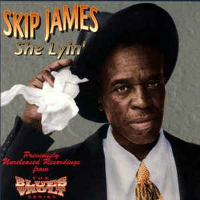 Later in 1964, perhaps November or December, Rosenthal would record Mississippi John Hurt at the Ontario Place Coffee House for Dick Spottswood’s Piedmont label (Gene would also engineer Pete Seeger’s interview of Hurt at a house in DC’s Mt. Pleasant neighborhood around that same time). Toward the end of 1964, or possibly early 1965, Rosenthal would also record blues guitarists Archie Edwards and Frank Mizell, at Adelphi Studios.
Later in 1964, perhaps November or December, Rosenthal would record Mississippi John Hurt at the Ontario Place Coffee House for Dick Spottswood’s Piedmont label (Gene would also engineer Pete Seeger’s interview of Hurt at a house in DC’s Mt. Pleasant neighborhood around that same time). Toward the end of 1964, or possibly early 1965, Rosenthal would also record blues guitarists Archie Edwards and Frank Mizell, at Adelphi Studios.
Rosenthal – who met Michael Stewart while attending George Washington University from 1960-62, where he co-founded GW’s Folk Music Club (incorporated later as the Folklore Society of Greater Washington) – would work for Project Hope between the years 1962-1964, before recording Mississippi John Hurt in late 1964.
Gene would return to his studies, first locally for one year (Montgomery College, 1964) then in St. Louis for a couple more (Washington University, 1966-1967), before deciding to take the big plunge — via Adelphi’s founding in 1968 — to commit himself fully to music.
Soon after the label’s formation, Rosenthal — along with sister Carol and Mike Stewart — would take to the road. As noted in in The Guardian‘s 2007 obituary for Stewart:
Adelphi conducted several field trips to blues locales to trace and record half-forgotten musicians. Stewart was always on hand, whether to jog the performers’ memories by playing them their own music, learned from rare 78rpm discs, or to provide accompaniment. In Memphis he played with guitarist Richard ‘Hacksaw‘ Harney; in Chicago with Johnny Shines, Sunnyland Slim, David ‘Honeyboy’ Edwards and Big Joe Williams [the latter serving as talent scout]; and in St Louis with pianist Henry Brown and singer-guitarist Henry Townsend.
Memphis Piano Red with Mike Stewart –
Visiting Sleepy John Estes at home in Tennessee
Adelphi’s inaugural release, meanwhile, would be the 1968 debut album by a fellow member of the so-called East Coast Blues Mafia member, Mike Stewart, under the nom de guerre “Backwards Sam Firk” (now available as a digital download — GCD 1001). As it turns out, Stewart had been the first to lay down tracks at Adelphi in 1963, before construction had been completed on the studio.
 Firk would team up with Stephan Michelson (i.e., “Delta X“) for 1969’s Deadly Duo (on which the pair would be joined by Tom Hoskins on “Nineteen Fifty-One Blues”) and also blues musician and singer, Henry Townsend (whose earliest recording “Henry’s Worry Blues” was released by Columbia in 1930) for Henry T. Music Man., a collection of recordings made between the years 1969-1974 — including 1971 sessions at Adelphi.
Firk would team up with Stephan Michelson (i.e., “Delta X“) for 1969’s Deadly Duo (on which the pair would be joined by Tom Hoskins on “Nineteen Fifty-One Blues”) and also blues musician and singer, Henry Townsend (whose earliest recording “Henry’s Worry Blues” was released by Columbia in 1930) for Henry T. Music Man., a collection of recordings made between the years 1969-1974 — including 1971 sessions at Adelphi.
Little Brother Montgomery’s Long Road to “Folsom Prison Blues”
… and Adelphi Records:
Historical Spotlight
Zero to 180 previously examined the issue of Johnny Cash having to pay restitution to Gordon Jenkins over the misuse of a song “Crescent City Blues” that Cash essentially adapted for “Folsom Prison Blues.” Clearly, Zero to 180 did not examine closely enough, as Jenkins himself had appropriated the title as well as melody of Little Brother Montgomery‘s 1930s instrumental of the same name (as noted by Jonathan Silverman in Nine Choices: Johnny Cash & American Culture from 2010).
Little Brother Montgomery would later record No Special Rider – with Jeanne Carroll – for Adelphi in 1969, the label’s third album release.
1971 would see the beginning of additional new recordings of Adelphi artists previously recorded on the road in 1969, facilitated in part by these same artists visiting the Washington, DC area for musical engagements, such as Smithsonian’s Folklife Festival.
Adelphi’s early releases would embrace African-American “roots” music — Furry Lewis, Bukka White, Gus Cannon, David “Honeyboy” Edwards, Johnny Shines (one-time touring mate of Robert Johnson), and George & Ethel McCoy (niece and nephew, by the way, of Memphis Minnie [McCoy]) — at a time when many (white) Americans were still getting their blues distilled through a British sensibility — if at all.
1972 letter from renowned photographer David Gahr to Gene Rosenthal

Suni McGrath, whose Cornflower Suite would be Adelphi’s second full-length release, would note his primary musical influences on the album’s cover notes:
“The music on this record is my attempt to explore and further the American acoustic guitar. I have four sources for the musics here presented: Bulgarian music for rhythmic modes and ideas, also modulation of melodic modes and harmonies; Hindustani for subtle melodic graces and ideas of variation; Fahey for the conception of the art; Bartok for modal harmonies analogous to conventional western harmony, and treatment of themes.”
Featured song: “Cornflower Suite” by Suni McGrath (1969)
[Pssst: click on triangle above to play the entire “Cornflower Suite” by Suni McGrath]
1969’s Cornflower Suite (currently out of print and trading on Ebay for $19-$87, though soon to be re-released) was recorded at Silver Spring’s Adelphi Studios, as well as the following albums bulleted below:
- Suni McGrath‘s Call of the Mourning Dove – songs of praise from God Pop‘s golden age — produced by Rosenthal in 1971, with cover art by Dick Bangham.
- Roy Bookbinder (who would enjoy a 45 release for “Delia” b/w “Candy Man“) recorded 1972’s Travelin’ Man at Adelphi, with Gene producing and engineering..
- Neil Harpe, on his first solo effort from 1972, would enjoy vocal and instrumental support from such folks as Max Ochs, June Symonds & Ty Ford.
- Houston Stackhouse’s 1972 recording sessions at Adelphi, meanwhile, would finally see light of day in 1994 with CD release, Cryin’ Won’t Help You.
- Suni McGrath‘s 1972 album, Childgrove received engineering and production assistance from Gene Rosenthal (who also served as photographer).
- Paul Geremia‘s Hard Life Rockin’ Chair from 1973 would also be produced and engineered by Rosenthal at Adelphi Studios.
- Stephen Spano would record the backing track for “Pam’s Song” from 1975’s s Eye to Eye at Adelphi Studios.(while the song would be further embellished at Track Recorders — see album history above)
- Harmonica Frank Floyd — Harmonica Frank Floyd (Swamp Root) — full-length release from one-time “medicine show” performer of songs that were recorded 1972-74 and issued in 1976.
Letter to Creem Magazine –
Cover design & illustration by Dick Bangham —
Liner notes by Frank Floyd
< Historical Spotlight on Dick Bangham >
DC-area artist Dick Bangham — most famously associated with his front cover image for Root Boy Slim‘s Zoom album of 1979 — has enjoyed working with Gene Rosenthal on a number of album releases over the years, in terms of cover design, illustration and/or art direction (most recently, he and wife Linda did the art & design work on the new album by Ken Swartz & the Palace of Sin noted above):
Bangham’s earliest Adelphi commission would be to provide the ink illustration for DC-area “hippie” ensemble Beverly Pureheart’s (now rather rare) EP from 1969:
Bangham would also provide cover ink illustrations for Adelphi’s two volume of recordings made of Nathan Beauregard, Mose Vinson, Furry Lewis, Gus Cannon, Dewey Corley, Bukka White, Van White, and Sleepy John Estes (et al.) recorded at Memphis’ famed Peabody Hotel in 1969 and 1970.
Volume 1 – 1971
Volume 2 – 1971
Bangham would provide the watercolor art that adorns the front cover of Suni McGrath‘s Call of the Mourning Dove album from 1971 and design the back cover, too. Bangham would also do – except for the front cover image – all other design and art direction work on Patrick Sky‘s (in)famous Songs That Made America Famous album (see historical spotlight below).
Suni McGrath‘s 2nd album – 1971
Patrick Sky‘s incendiary satire – 1971/73
Bangham designed the logo for the Adelphi Jazz Series and would provide layout and art direction on several Adelphi jazz releases, including — David Murray‘s Low Class Conspiracy from 1976, Steve Lacy‘s 1977 album Raps, and 1976’s The Portal of Antrim from pianist, Jessica Williams — not to mention Reuben Brown Trio’s 1976 Starburst album, featuring Richie Cole (profiled above).
David Murray — Low Class Conspiracy
Liner notes by Stanley Crouch – 1976
Steve Lacy — Raps
Liner notes by John Swenson – 1977
Jessica Williams — Portal of Antrim
For The Nighthawks‘ fourth album – 1977’s Side Pocket Shot – Bangham would do overall design work (utilizing David Suter‘s illustrations), while for The Phil Woods Quartet‘s ‘More’ Live album (of a 1979 Grammy-winning performance at Austin’s Armadillo World Headquarters), he would apply air brush directly onto a black & white photograph.
The Nighthawks — Side Pocket Shot
4th album – 1977
Phil Woods Quartet — More Live
Armadillo World Headquarters – 1981
Bangham would use his airbrush on Charlie Cline‘s More Dobro album (featured below), as well as Rosslyn Mountain Boys‘ self-titled debut (also below) — both 1976. Similarly, for The Fugs‘s 1982 “hits” reissue (ditto), Bangham would apply color paint onto a black & white photo of himself (in silhouette) taken by Jeanne Keskinen (see Historical Spotlight below). Bangham would also assist in the design of 1977’s North Mt. Velvet, Jaime Brockett’s return to recording after a miserable stint at Capitol (below).
Furthermore, Bangham would do art work – logos, et al. – on the first 6 or 7 releases in the GENES (pronounced “Jenn-ESS”) Blues Vault” CD series: Rev. Robert Wilkins, Mississippi John Hurt, Skip James, Bukka White, Furry Lewis, Houston Stackhouse, Rev. Gary Davis (also below).
Adelphi Album Releases in the 1970s
Adelphi would hew pretty closely to this country blues sound throughout the early 1970s — Roy Bookbinder, Rev. Gary Davis, Paul Geremia, Neil Harpe – before signaling a willingness to broaden its palette considerably with the release of Joel Rubiner’s field recordings of the Master Musicians of Jajouka (see Historical Spotlight below) on 1974’s album of the same name.
Adelphi’s releases in the 1970s were in no way exclusive to Rosenthal’s own Adelphi Studios or even nearby Track Recorders but would, in fact, come to the label having been birthed elsewhere.
Historical Spotlight:
Gerry Goffin’s It Ain’t Exactly Entertainment
Recorded by one of the Brill Building songwriting greats in November/December, 1972 in Muscle Shoals, Alabama at both Muscle Shoals Sound and Fame studios. Gerry Goffin’s debut solo album would be published by Screen Gems, for whom Goffin was contracted, and yet (like the Patrick Sky album) no label would touch it — certainly not Bell Records, the label most closely associated with Screen Gems. The sprawling double album, with its Americana roots vibe and counterculture spirit (particularly on album-opening track “Down on the Street”), aimed far afield from the classic Brill sound and aligned more closely, for instance, with Exile on Main Street-era Stones, especially on the album’s second track “Reverend Bottom’s Tojo Saloon” (with slide guitar by Eddie Hinton).
Despite a winner of a single in the radio-friendly title track (which charted in Cash Box, according to Rosenthal), the album was considered radioactive within the industry and, thus, sank like a stone — although lovingly reissued as a 2-CD set for the Japanese market in 2001 by Air Mail Archive. Worth pointing out, as Rosenthal recently noted on Facebook, that there is some “really great stuff from those sessions that Gerry decided NOT to include in the 4102 LP release, quite possibly (unbeknownst to me at the time) because he understood that we were already at MAX LP cutting time — probably correct because I had to recut one of the original sides 3 times because we just flat kept running out of groove space. You had to see it on the lathe playback!”
Billboard, in its June 23, 1973 edition, would write:
“Adelphi Records has signed veteran writer Gerry Goffin to Adelphi’s standard one-LP, non-exclusive contract. Signing covers the new Goffin album, written with keyboard veteran Barry Goldberg. Double-disk packaging focuses on political turmoil, with Goffin completing initial compositions prior to last fall’s elections and then adding additional material later. First single from It Ain’t Exactly Entertainment will be ‘Maryland Again’ [*Note: “It’s Not the Spotlight” released as 45 instead].”
Record World
Postscript: Although the recording contract only called for one-album, Adelphi would end up releasing Goffin’s second (and final) album, Back Room Blood in 1996. At the time of the album’s release, Goffin would tell Cashbox‘s John Rhys that Back Room Blood “is almost totally politically-motivated” and “fulfills his need to express his anger and dismay at a world gone seemingly mad.”
In Defense of the First Amendment:
Patrick Sky’s Songs That Made America Famous
A folk singer-songwriter of Irish and Native American ancestry, Patrick Sky would record two albums for Vanguard, followed by two more on Verve Forecast before arriving at Adelphi. United Artists would decline to distribute Sky’s scabrously satiric Songs That Made America Famous. But that’s not even half the story – as Gene Rosenthal hilariously relates on the Adelphi Records website:
“Patrick Sky had been performing several selections as part of his infrequent club appearances and garnering rave reviews. Then the story of the recording (made in March 1971), in its journey among the major companies, began to appear in print. By November, 1972, Al Aronowitz (‘the Outlaw Journalist’) assembled the fragments of the tale and reported on the then-languishing status of Songs That Made America Famous for the New York Post. Of the majors’ reactions, he reported the following — John Hammond of Columbia: ‘It’s incredible!’; David Wilkes of Vanguard: ‘This is the most disgusting thing I’ve ever heard’; Jerry Greenberg of Atlantic: ‘I won’t put it out, but I’d like to have a copy to play at one of my parties.’
“In total, the album was turned down by 10 different record companies until it came to the attention of Herb Gart. Gart got United Artists to agree to put it out but without their name on the label and without the word America in the title. Except that Columbia, Capitol and RCA, who own the pressing plants, refused to manufacture the record, insisting that the older women who work in Quality Control should not be subjected to such filth. Now release of the album is in doubt and the songs may be lost to the ages. Not to worry, Al. Gene Rosenthal of Adelphi Records heard the masters and found sufficient ‘redeeming social content’ in Sky’s outrageous satire to issue the LP, complete with its controversial title, cover art and label design (a bare ass take-off on the Apple Records label.)
Of course, America still had a sense of humor in those days…”
The album — designated by Cashbox as “THE social commentary disc of the decade” — would also feature the earliest recording of Dave Van Ronk‘s “Luang Prabang.” Sky would be the second artist accorded the honor of an Adelphi 45 single release.
Hand lettering by Dick Bangham on this 45 –
Charlie Cline: 1974’s Country Dobro + 1976’s More Dobro (with Marrakesh Express) The latter LP features art work by Dick Bangham and includes “Pickaway” — check out this video clip of Charlie Cline & Cronies at Joe’s Record Paradise.
Hickory Wind -&- Herb Smoke with The North Mountain Ramblers: both from 1974 — check out this documentary video link to Hickory Wind: American String Band Music (Hickory Wind album now available as digital download GCD 2002).
Historical Spotlight:
The Master Musicians of Jajouka
Following Brian Jones’ historic field recordings of 1968, Joel Rubiner – as noted by On an Overgrown Path – would trek to Morocco in 1972 to make fresh (and “unfiltered”) recordings, after which Adelphi, indeed, “took a chance” on its original vinyl release two years later [issued with a multi-page booklet, liner notes provided by Robert Palmer]. When asked by Zero to 180 as to well the album originally performed in the marketplace, Rosenthal would reply:
“It DID NOT SELL worth a damn, even in spite of a MAJOR Bob Palmer (VERY extended) timely review in Rolling Stone Magazine! (That’s Bob Palmer the “writer” & horn player with the Insect Trust, and ALSO the “then” Music Reviewer for the New York Times, NOT that “other” musician aka Bob Palmer!
But I digress — it was the single “most expensive” PACKAGE that Adelphi EVER produced till this very day! I made an overt decision right then, that if the music was worth producing and releasing and if you believed in it…. then you’d better put your money where your mouth is —- and just do it all the way to the best of your ability! Although that release was a financial disaster, it absolutely helped establish Adelphi as a ‘quality’ Small Independent Record Label in 1974.”
Adelphi Ad in Unicorn Times – c. 1976
[Note references above to (1) rare 1976 LP by John Guernsey and the Mystery Band, as well as albums that never came to pass by (2) Liz Meyer and (3) Fast Flying Vestibule.]
The Nighthawks‘ Open All Nite + The Rosslyn Mountain Boys‘ debut: both 1976 — Nighthawks second album and Adelphi debut, engineered at Track by Obie O’Brien (although recorded at Georgetown’s legendary Cellar Door), would be pressed at Capitol’s Pressing Plant in Scranton and later remastered by Mobile Fidelity Sound Lab for a special edition CD reissue. Rosslyn Mountain Boys would also feature local talent — Tommy Hannum, Joe Triplett, Peter Bonta, Barry Foley, and drummer Bob Berberich (of Grin fame) — not to mention airbrushed cover art by Dick Bangham.
An Adelphi Records Bicentennial History Spotlight:
1976’s The Top Hits of 1776
via John Townley‘s Astro Cocktail
“It’s been long enough since this original history-documenting LP has been available – missing reprint in either cassette or later CD formats – that it needs a brief twenty-first century historical note itself. In the early 1970s, I was asked to sing and play on a variety of American history recordings in the run-up to the Bicentennial, including album sets for The National Geographic Society and Oscar Brand, who published a book and several albums of American Revolution period songs. Throughout, I found it peculiar that almost all the material was political, as if singing about the war was the only music on American lips at the time, which was very much not the case. So, after a year or so of poring over period music collections, songbooks, sailor’s companions, broadsheets, and contemporary musical biographies at the New York Public Library, Julliard, and elsewhere, I came up with a collection of what were actually the most commonly found songs in the historical record of the late Colonial and early post-Revolution periods. From these I subtracted the political songs (already recorded) and with the generous help and support of Gene Rosenthal at Adelphi Records, went into the studio and recorded the cream of the crop. They were the songs of love, drinking, hunting, humor, entertainment and even wry cultural commentary that America was singing as it was born, mostly penned in mother England.”
Jaime Brockett‘s North Mt. Velvet (1977) + Holy Modal Rounders‘ Last Round (1978)
In which Brockett is joined by Ricky Skaggs, Ramblin Jack Elliott, Ben Eldridge, John Duffey, Mike Auldridge, and Jan Davis (et al.) on his first album for Adelphi [now available as digital download GCD 1028] — includes trucker tune “Just Stopped By To Git a Cup of Coffee.” Meanwhile the original ‘Monsters of Folk’ – i.e., Peter Stampfel & Steve Weber – go one “last round” (at least until 1981’s Going Nowhere Fast) with a cover that features Stampfel’s own bottlecap collection, not to mention the distinctive “Rugby” typeface — includes “Euphoria.”
Bill Harrell & the Virginians (1978) + Catfish Hodge Band‘s Eyewitness Blues (1979) Former Don Reno sparring partner, Bill Harrell, along with The Virginians, would record their 1978 Adelphi debut, Ballads and Bluegrass, which features the stand-out dobro work of Mike Auldridge. Former Westbound recording artist, Catfish Hodge, and his bandmates, meanwhile, get funky on his Adelphi debut, which features “To the Left (and On the One).”
Adelphi Promo Ad –
December, 1979 issue of Unicorn Times
Historical Spotlight:
1978’s Coup de Grass with Michael Dunkley
・ Michael Dunkley (Guitar, Vocals)
・ Larry Benade (Lead Guitar, Vocals)
・ Brit Stenson (Banjo, Dobro, Vocals)
・ Jack Cowardin (Mandolin, Fiddle)
・ Michael Schonbach (Bass)
“When our band was formed in 1973 as The Mindless Wonders, Track was the main recording studio for the region and was well-known for being very ‘musician-friendly.’ As we arrived for our first session, the engineer brought out 5 pairs of headphones for us to wear while recording, and we said ‘Who performs wearing headphones? No thanks.’ Ah, youth. Most of the songs were recorded in one take, in real-time, with all of our studio hours booked between 9PM to 3AM, and everyone fueled by the 24-hour Little Tavern across the street.
We self-financed our recording sessions at Track and had already finished the album, to the point of having a metal master made by George Marino at Sterling Sound, when we received a call from Gene and were told that he would sign us to Adelphi and release our album…but only if we were to record a song entitled “The Ballad Of Bradford Bishop,” a song written by someone we knew and one that Gene had heard us perform at one of our shows. We readily agreed and went back to Track, recorded the song and had the record re-mastered.
The story behind the album’s cover is somewhat checkered, and we were delighted to have Jerry Douglas tell us that it should have won an award for ‘Best Cover’ — later we learned that David Grisman has a copy of it on his music room’s ‘Wall of Fame.’ On the other hand, one club owner said that he could never mount our album on the club’s wall, because it would end up ‘shot full of holes!’”
The Allstars from Charlottesville’s Tip Your Waitresses:
Gene Rosenthal Album Highlight
“For those not familiar with the group, they were a truly ‘All Star’ lineup of performing musicians, as well as guest appearances on the LP by Jimmy Thackery, Tom Principato and Dave Birkin, let alone the ‘all-star’ producer/mixing icons, including Bob Margolin, various members of The Nighthawks, as well as the Track Recorders ‘A’ team — Gerry Wykoff and Bill McCullough.
The released LP contained(s) a total of 12 songs (6 per side). Both sides ran over 20 minutes. In those days, those were considered to be ‘Long’ sides, generally meaning that you’d either have to cut back the ‘Bass’ levels in the ‘inside’ bands, or have to reduce the overall fidelity/dynamic range or ‘compress the [daylights] out of everything. Only by my using the ‘Best’ Mastering engineer in the business at that time (George Marino, of Sterling Sound, NYC) were we able to get all 12 songs on without degrading the fidelity.
The real problem, I just discovered, was that we had just too much good stuff mixed & ready to go. The CD reissue (is expected to have) a minimum of 5 additional songs from the same Track sessions as the other ones, and who knows what digital magic might do for the ‘live stuff.'”
The North Star Band‘s 1979 debut + Lenny Breau‘s Five O’Clock Bells also 1979 – Tonight the North Star Band features “Redneck Hippie”; Five O’Clock Bells (from “one of the true geniuses of the guitar,” according to Chet Atkins) kicks off with a contemplative version of “Days of Wine and Roses” that is preceded by a most lovely and arresting intro.
In 1979, Adelphi would serve as the US distributor for an anthology album by Canada’s Downchild Blues Band, fronted by Don Walsh, who contributed (thanks to his friendship with Dan Aykroyd) two songs on 1978’s hit album by The Blues Brothers. 1978 would see the release of Bush Baby by Black Arthur Blythe, the Adelphi album that preceded his debut release on almighty Columbia the following year. As Rosenthal points out, “This release pretty much ‘launched’ Arthur’s career, so much so that a year or so later, when he signed to Columbia, he ‘re-recorded’ several of these songs — changing their ‘names’ and his Columbia ‘producer’ didn’t even notice. Suffice it to say, Columbia settled immediately when it was brought to their attention.”
The DC region in the 1970s, Gene Rosenthal points out, was considered a “crossover” market, in terms of black artists crossing over into the white market and vice versa. As a result, the Mid-Atlantic area received special attention from the major labels, especially at a time when electronics whiz George Massenburg (a pioneering force behind parametric equalization) had designed, built, and managed the massive ITI studio complex in Hunt Valley, Maryland, as well as famed Blue Seas Recording, the converted barge which floated in nearby Baltimore harbor until its tragic and untimely demise.
Massenburg’s partner, Burgess Macneal, who owned the ITI brand after the Hunt Valley studio’s liquidation in 1975, continued operations and renamed the brand as Sontec (whose first customer would be NYC’s Sterling Sound). Rosenthal is still a proud owner of a vintage-era Sontec equalization unit (pictured below).
Adelphi Album Releases in the 1980s
Tracy Nelson‘s Doin’ It My Way (rel. 1980) and Lenny Breau‘s Mo’ Breau (1981) — Adelphi would reissue 1978’s Doin’ It My Way by (Mother Earth‘s) Tracy Nelson, with kick-off track “Lies” penned by Roger ‘Jellyroll‘ Troy and Nick Gravenites. Mo’ Breau‘s highlights include the sadly beautiful “New York City.”
Obie O’Brien – as guitarist, keyboardist, percussionist, producer, engineer, and mixer – threatens to steal the show on Gene Johnson‘s one and only album from 1981 (with Lance Quinn on rhythm guitar, Hugh McDonald on bass & Steve Sheppard on guitars & keyboards, et al.) The previous year, saxophonist Charles Tyner would close his sole album for Adelphi (recorded live on the Verna Gillis Show WBAI FM) with a free jazz take on rhythm & blues classic “Sixty Minute Man” (1951 hit for King Records subsidiary, Federal, by The Dominoes).
Pearls Before Swine Best of (1980) and The Fugs‘ Greatest Hits: Proto Punk (1982) — “Tom Rapp’s Pearls Before Swine [was] perhaps the greatest band venturing in psychedelic-folk during the 1960s. Their two masterpieces, One Nation Underground (1967) and especially Balaklava (1968) are mosaics of atmospheric songs that defy classification, evoking the hallucinated state of Dali’s surrealism, lushly arranged, and influenced by both classical and jazz music,” so says Piero Scaruffi. Adelphi would also bravely reissue an anthology of “hits” by that other group of renegade avant-folksters, The Fugs, that includes a short essay by Lester Bangs (whose unedited version packs an appropriate punch) on the back cover, as well as album design by Dick Bangham, with photo images by Jeanne Keskinen.
< Historical Spotlight on Jeanne Keskinen >
“Yes, I worked with those guys (Gene R and Dick B) through the 80s on various projects. I got the photo gig for the FUGS album cover (Proto Punk) through Dick, though I knew Gene for many years before that. I was just out of the Corcoran School of Art in DC (now called something like Corcoran School of Design and Art—can never remember the name, don’t get me started) with a photo and design degree and was ready to do record album art! Throughout school I worked at the Unicorn Times part-time weekends as a graphic artist and was very much tied into the music scene—another long story. Dick knew I was crazy about Beatniks (Allen Ginsburg, Lester Bangs—Creem and Rolling Stone Magazine!) so that sold it. In other words, they wanted something wacky and strange which was right up my alley, plus connected with the punk scene that I was following. I have a few other pictures from the “shoot” but they’re just of Dick writing on the wall in the photo and a few other poses—title at the time of the album was “Rock and Wall”—with no actual photos of the FUGS. It was also clever then to paint color on B&W photos and make photo edging dark and mysterious — a Saturday Night Live influence, I guess.
I sadly never met the FUGS but knew so much about them and was really happy that the first really big photo credit I ever got was tied into their Grammy winning album! I get to say I did a photo for a Grammy winning album but when people ask who it was, you can see their faces change to “huh, who? the FUGS?” Everyone involved on the album got a bottle of champagne. I still treasure my champagne box (yes, we drank it, of course) still on my bedroom dresser that I still use for my jewelry box.
Afterwards, I went on to work on Mary Chapin Carpenter’s first album (w/ Dick and Tom Carrico) along with Reggae albums and CDs for Sunsplash and RAS Records (Gary Himmelfarb), Tex Rubinowitz, Root, Patty Reese, and on and on.
I see Gene from time to time, but we travel in such different circles the relationship is very different now. I can say that Gene really is/was a fearless engineer of much of the music production and promotion of those days that was not always discovered on its own, and he accomplished it locally—never really staking out NYC, LA or using email or internet. I always noticed how his struggle was always very real for him and that he really stuck to his beliefs. It was such a different time and super competitive—so much more than today—and Gene really rose to the challenge.”
Widespread Jazz Orchestra‘s Swing Is the Thing would anticipate, in 1983, the “jump, jive ‘n’ wail” revival by a good dozen years or more. Meanwhile, Lenny Breau (who would record an album with steel guitar master Buddy Emmons in 1978) and his Trio would cut a limited edition ‘Audiophile Direct to Disk’ LP the following year (with Chet Atkins featured on the opening track) that would enjoy reissue on Adelphi in 1985. Breau’s album (along with the Tracy Nelson album and Phil Woods’ Live Volume One recorded at Armadillo World HQ) would be one of several Adelphi albums mastered by the master of mastering, Bob Ludwig.
Chris Smither‘s It Ain’t Easy (1984) and The Trees‘ Forrest Fires (1987)
Singer-songwriter Chris Smither would record his third album for Adelphi, which features the wry, fingerpicked “Ninety Nine Year Blues.” Meanwhile, Adelphi’s debut release by synth-pop group The Trees (executive produced by Our Lord, no less) would signal yet another stylistic shift of not insignificant proportions for the label.
1988 would see the release of Last Sessions — Lenny Breau‘s final solo guitar recordings prior to his untimely death in August, 1984.
Roots Reggae & Dancehall
In 1983, Rosenthal would form Sunsplash Records in order to issue performances from the 1982 Reggae Sunsplash Festival (by a number of artists that the Rocksteady Kid would spin as a guest DJ on University of Maryland’s WMUC in the late 1990s), such as ….
- These four releases from 1983: Toots & the Maytals — with a set dedicated to Bob Marley that includes “(Marley’s Gone) His Songs Live On,” plus backing from such all-star musicians as Winston Wright (keys), Hux Brown (guitar), Jackie Jackson (bass), and Paul Douglas (drums) — Yellowman (backed by The Sagittarius Band), Chalice (with stellar horn support from David Madden & Dean Fraser, et al), and The Gladiators plus Israel Vibration.
- These three releases from 1984 — Big Youth [backed by George Fullwood (bass) Santa Davis (drums) and Earl “Chinna” Smith (guitar)], The Twinkle Brothers, and Eek-a-Mouse (backed by The Sagittarius Band) plus Michigan & Smiley (backed by Lloyd Parks & We the People Band) — and 1992 CD title, Mutabaruka plus The Mighty Diamonds.
All Sunsplash releases would be mixed by legendary engineer Errol Brown at Tuff Gong, recorded (in part) by DC’s own Jim Fox, and mastered by the aforementioned Bob Ludwig — with art direction and design from Dick Bangham, who also did extensive work for Silver Spring-based reggae indie label, RAS Records (which would eventually be purchased in 2003 by UK-based Sanctuary Records Group).
Gene Rosenthal with Bob Ludwig
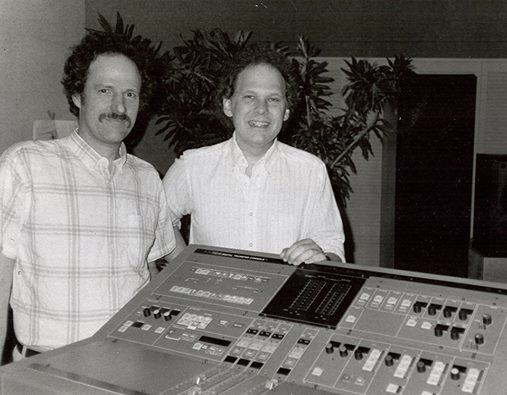 Adelphi Releases in the 1990s:
Adelphi Releases in the 1990s:
The GENES Blues Vault
As Chris Morris would report for Billboard in 1995, Rosenthal “wound up recording [Mississippi John] Hurt for Piedmont and [Skip] James for Takoma in 1964” and, by 1970, “Adelphi began releasing a handful of Rosenthal’s own recordings and some of the tapes cut for Piedmont and Takoma that had languished in the vault.” As Gene explained to Billboard:
“What happened was, as we started building our own label, a lot of this earlier material that we still had in our vaults, because we were protecting masters for other people, became available for sale … We bought back our own tapes, basically.”
Adelphi’s original release of blues recordings in the early 1970s, unfortunately, would happen to be, according to Rosenthal, “the very end – we didn’t know it was the end at that point – of the blues revival.”
Consequently, Adelphi would weather the 1970s and ’80s by diversifying into other musical genres. But the success of the 1990 double-disc anthology of Robert Johnson’s Complete Recordings signaled a renewed interest in fingerpicking country blues, and from Rosenthal’s perspective, “it was pretty obvious that there was a bona-fide blues revival going on” and, thus, an opportune time to clean up the label’s master recordings from the 1960s and ’70s for entry into the marketplace, most for the first time ever.
Preparation of these recordings for release on compact disc, however, would require painstaking care. As Rosenthal explains:
“One of the major problems working with these tapes from the ’60s is their willingness to self-destruct for no apparent reason … The tapes are so fragile that [with] many of the machines, if you try to put these tapes on, you watch the backing go one way and the oxide go the other way.”
Morris would note the “exceptional care” that went into not only remastering but also the annotation and packing of each title in the Blues Vault series, with liner notes by a number of respected blues scholars and images by such legendary photographers as Jim Marshall and David Gahr.
CD issues would begin in 1993, with Rev. Robert Wilkins (1971 studio sessions, with liner notes by Dick Spottswood and Robert Palmer); Mississippi John Hurt (a 2-CD anthology of his 1964 Ontario Coffee House performances that also includes an interview conducted in DC by Pete Seeger and engineered by Gene Rosenthal); and the aforementioned Skip James live and studio recordings from 1964, She’s Lyin’.
Two CD issues would follow in 1994: Bukka White (recorded live at The Cabale in Berkeley, CA in November, 1963 – with liner notes by David Evans) and Houston Stackhouse (1972 recording sessions at Adelphi Studios — with liner notes by noted Robert Johnson researcher, Steve LaVere).
Three CD releases would find release in 1996: Skip James (previously unreleased recordings from Cambridge, Massachusetts — October 29-30, 1964); Rev. Gary Davis (with liner notes by founder/creator of NYC’s Apostolic Studios, John Townley – LP originally issued in 1973); and Richard ‘Hacksaw‘ Harney (1972 studio sessions – with liner notes from Larry Hoffman
Two new CD titles would be issued in 1997: Harmonica Frank Floyd (from 1972 recording sessions, with post-production work done at Silver Spring’s own Uncle Punchy‘s) and Mississippi John Hurt (previously unreleased 1964 recordings from the Ontario Place Coffee House, with liner notes by Larry Hoffman & producer, Dan Doyle).
Four CD titles would enjoy release in 1999: Henry Townsend (accompanied by Mike Stewart on guitar); Furry Lewis with Bukka White & Gus Cannon (with liner notes by Mike Stewart); R.L. Burnside (with recording, editing, production, mastering and photography by Gene Rosenthal – from 1969 sessions); and David ‘Honeyboy‘ Edwards‘ Don’t Mistreat a Man from 1999. [Little Brother Montgomery’s 1969 album with Jeanne Carroll, No Special Rider, would also be reissued on CD that same year with two extra tracks.]
2000 would see the last issue from the “Blues Vault: Furry Lewis with Lee Baker, Jr. (with liner notes by Jim Dickinson & Dave MacKenzie – cover photo by Jim Marshall).
 Additionally, toward the end of the 1980s and throughout the 1990s, Adelphi would begin to reissue various titles in its back catalog on compact disc — Chris Smither, Master Musicians of Jajouka, Patrick Sky, The Nighthawks, Lenny Breau, Reuben Brown Trio with Richie Cole, Reggae Sunsplash series — as well as issue new titles by Otis Rush, a 1996 concert album recorded in Europe, and the aforementioned final album by Gerry Goffin, Back Room Blood, also released in 1996.
Additionally, toward the end of the 1980s and throughout the 1990s, Adelphi would begin to reissue various titles in its back catalog on compact disc — Chris Smither, Master Musicians of Jajouka, Patrick Sky, The Nighthawks, Lenny Breau, Reuben Brown Trio with Richie Cole, Reggae Sunsplash series — as well as issue new titles by Otis Rush, a 1996 concert album recorded in Europe, and the aforementioned final album by Gerry Goffin, Back Room Blood, also released in 1996.
Gerry Goffin –
March 23, 1996 edition of Cash Box
1999 would also see the release of 11 original songs, Lost and Broken Hearted, by Strange Brew – Marcy Eustice (vocals, flute, and percussion), Fran Rifugiato (guitar), Joe Jeffries (bass), and Mike Visnick (drums) – who combine American roots music with elements of blues and rockabilly, as on the title track, “Lost and Broken-Hearted.”
Roy Buchanan’s DC Roots (By Way of Italy):
CD Spotlight – Bringing It Back Home
Buch and the Snakestretchers — legendary guitarist Roy Buchanan‘s first recording, captured live in 1971 at Bladenburg, Maryland’s Crossroads night club — would first be reissued on CD in Italy (as a bootleg, Gene informs Zero to 180, on the Habla label) in 1989 before finding release in the US three years later on Silver Spring’s own Adelphi label. As Marc Fisher notes in the CD liner notes:
“Instead of a conventional album jacket, the LP came in a burlap bag with Buch and the Snake Stretchers on it. The album was placed in selected local record stores in the D.C. area. Roy stated years later that about 10,000 copies of the album sold, and it had a reputation for being a ‘bootleg’ album, because of its unique packaging and lack of liner notes. Similarly, the packaging made it almost impossible for the album to get airplay.
Prior to becoming Roy’s percussionist, I had been working at a clothing store in Georgetown called Up Against the Wall. We put jeans we sold into promotional burlap bags with the store’s name along with Landlubber, a brand of bellbottoms. I used one of the burlap bags for my tambourines and maracas. Roy’s manager, Hal Davis, took notice and wanted to use this burlap bag concept for the LP. With no sleeve on the record the albums always had telltale burlap on them. In any event, the album was easily identified, and Roy seemed to enjoy the down home look.”
Check out the soulful guitar work on ‘power ballad’ “Sweet Dreams.”
9:30 Live! A Time, A Place, A Scene
Adelphi’s Special 2-CD Release
1997 would see the release of a 2-CD live set “captured live during the last days of the world-famous 9:30 Club at its crowded, decadent, smelly and totally lovable original location in Washington, DC.” As the Washington Post’s Eric Brace would note in the April 18, 1997 edition:
“‘The final weeks at the 9:30 Club’s old F Street NW location at the very end of 1995 were pretty loony, particularly the last few nights. People were chiseling souvenirs off the walls, even as the groups on stage were trying to put on the show to end all shows. The club had booked bands from out of its past to close this chapter, and looking at the schedule that December, Adelphi Records’ Gene Rosenthal wondered if the club was documenting the occasion.
‘It was a week before Christmas when I heard they weren’t recording those shows, so I asked if I could,’ says Rosenthal. ‘I just couldn’t believe it wasn’t being documented.’ His pal Larry Packer of Uncle Punchy Studios installed himself and his audio gear in the club’s basement, and in its final nights he caught on tape locally based acts like Tiny Desk Unit, Tru Fax & the Insaniacs, Urban Verbs, Black Market Baby, the Insect Surfers and Mother May I, some of which had long since broken up and were regrouping just for that show.”
Adelphi Records Into the New Century
At its peak, when Adelphi Records and its distributor, CARD, were located in Washington, DC at 6401 Chillum Place, NE, the operation had a total staff of 14 full-timers, including Hap Passman, who “has been with Adelphi forever,” says Rosenthal, who adds, “Actually, he was sorta associated as a retail manager beginning in the mid/late 70s, actual staffer beginning in the mid/late 80s.” Adelphi staff presently numbers three and one-half to four persons (“on a good day”).
Hap Passman –
Down in the Archives
 The Adelphi story would be incomplete without a mighty nod to Big Al Sevilla, the soulful steel guitarist, long-time supporter of the DC music scene (going back to the Wax Museum days), and inveterate photographer, who captured images for a number of Adelphi album releases, including Times Four, the 2-LP set by The Nighthawks.
The Adelphi story would be incomplete without a mighty nod to Big Al Sevilla, the soulful steel guitarist, long-time supporter of the DC music scene (going back to the Wax Museum days), and inveterate photographer, who captured images for a number of Adelphi album releases, including Times Four, the 2-LP set by The Nighthawks.
Big Al Sevilla –
With Gene Rosenthal, Sandra Koppel, Diana Quinn & Patsy Sevilla
 Adelphi’s blues holdings would suddenly enjoy a new worldwide audience in 2017, thanks to the aforementioned partnership with Fat Possum – in conjunction with Amazon Music – via the 10-album anthology Worried Blues that makes these rare and previously out-of-print recordings available on vinyl and CD, as well as MP3 download. As Fat Possum explains:
Adelphi’s blues holdings would suddenly enjoy a new worldwide audience in 2017, thanks to the aforementioned partnership with Fat Possum – in conjunction with Amazon Music – via the 10-album anthology Worried Blues that makes these rare and previously out-of-print recordings available on vinyl and CD, as well as MP3 download. As Fat Possum explains:
“These recordings sat untouched for over two decades before seeing a limited CD release in the early 1990s on Adelphi. Worried Blues represents the music’s first widespread release, and first time on LP.
These recordings have long been highly treasured, primarily for their striking variety. Despite nine out of the ten artists hailing from central and northern Mississippi, no two styles are alike. From the ragtime folk-tinged blues of Mississippi John Hurt, to the ebullient signature slide guitar of Furry Lewis, which would later earn him an opening slot on tour with the Rolling Stones, Worried Blues preserves an exceptionally rich moment in our cultural history. In his thoughts on the series, Grammy-winning music historian Elijah Wald explains, ‘The richness of Mississippi blues derived from the combination of isolated, majority-black regions populated largely by young newcomers from other areas as the Delta swamps were drained at the turn of the 20th Century, and these players created quirky, individual styles by mixing older sounds with what they were hearing from neighbors, records, minstrel and vaudeville troupes, and whatever other influences came their way.’”
2017 would also see the release of the debut album by the aforementioned Ken Swartz & the Palace of Sin, Smile Away the Blues, in the old time finger picking blues style but with an eclectic choice of material and a New Orleans sound and feel.
 Rosenthal is also giving serious consideration to issuing other rare, unreleased, and/or invaluable recordings in the Adelphi vaults, including
Rosenthal is also giving serious consideration to issuing other rare, unreleased, and/or invaluable recordings in the Adelphi vaults, including
- Backwards Sam Firk Memorial Anthology — “two CDs of the finest country blues picking that ever was or will be”
- John Fahey Memorial Anthology: “The Early & Middle Years” — a 90-minute DVD that would include three filmed sets live at DC’s Cellar Door, 1969, plus two CDs of previously unreleased performances from the same period
- Taj Mahal – two live sessions from the National Folk Festival at Wolf Trap Farm Park, (including workshops)
- Kerrville Folk Festival — 45 performances (over two hours of music) that were mixed and mastered in 1977 but never released, including selections from Steve Young, Marcia Ball, Townes Van Zandt, Tom Paxton, Tracy Nelson, Steve Fromholz, Delbert McClinton, Guy Clark, B.W. Stevenson, Butch Hancock, and Milton Carroll.
- Hunter S. Thompson — spoken word “live” lecture series from 1978 at four college locations: University of Massachusetts, University of Boston at Lowell, Montgomery College, Maryland and Virginia Commonwealth University. Says Gene, “My two weeks ‘on the road’ with Hunter, doing this documentation, should probably explain away to everyone, any and all of my idiosyncratic behaviour beginning in/from 1978. Still absolutely timeless!”
- Paul Geremia, Volume 2: “Then & Now” — CD of previously unreleased material, including 25 minutes from 1970s sessions and 25 minutes from several “live” sessions 2012-2013.
- Jaime Brockett with The Rudy Toot Band — previously unreleased live sessions from 1978.
- Blues Around DC, 1960-1975 — As Gene can tell you firsthand, the DC area had an authentic and indigenous blues scene that was (despite statements to the contrary) “documented beginning in the late 50s and which was substantially over by the late 70s! The primary documentarian of these local DC blues artists was Ed Morris (RIP). Beginning in 1963/4 I met Mr. Ed Morris, who quickly reminded me of what it is all about … by hook or by crook. Ed managed over the next six years to bring to my recording studio beginning in 1964 — Frank Mizell, Ed Green, Flora Molton — and was primarily responsible for also instigating the Archie Edwards Adelphi studio sessions. All done “gratis,” Ed was dedicated, but I’ve failed to mention that Ed had by himself also recorded multiple times (earlier) Buddy Boy Jenkins, as well as Green & Molton. He was so good, that I’ve even found a fully executed contract with Ed (Eddie) Green stuffed inside a 7″ tape reel, tapes being masters of Ed and Flora and Buddy Boy.”
In recent years, Rosenthal would also make a valiant attempt to unseat an ethically-challeged congressional representative who later resigned his post to avoid a formal investigation.
Trivia Corner!
- True or False: Willie Nelson’s name once appeared on a track listing of an Adelphi long-playing record release.
- Answer: True! Exactly one song: “The Party’s Over” (1967 A-side, originally) —
1983 Adelphi 2-LP Texas Folk & Outlaw Music: Kerrville Festivals 1972-76
Album includes performances by Guy Clark, Townes Van Zandt, Augie Meyer, and Jerry Jeff Walker, among other lesser-known artists.
— Gene Rosenthal & Adephi Records in the Periodical Literature —
- “Small Indie Distributors Seek Strength Through New Assn.” – Billboard Apr. 29, 1972 edition
- “Feb. Memphis Meeting Set to Form Indie Dist./Mfr. Assn.” – Billboard Jan. 27, 1973 edition
- “Adelphi Sales Go Up 400% in Year” – Billboard Nov. 13, 1976 edition
- “Adelphi Revamps Foreign Distrib, Ponders Licensing” – Billboard Dec. 24, 1977 edition
- “D.C. and N.Y. Distribs Merge – Billboard Feb. 11, 1978 edition
- “No Recession for the Adelphi Label” – Billboard Sep. 20, 1980 edition
- “Jem to Distribute Adelphi Product” – Billboard Aug. 28, 1982 edition
- “Adelphi Has Ended Its P&D Deal with Jem” – Billboard Dec. 28, 1985 edition
- “Skip James’ Hard Time Killing Floor Blues” – Eddie Dean in Washington City Paper – Nov. 25, 1994 edition
- “Adelphi/Genes Starts Issuing 50-Volume Blues Vault Series” – Billboard Feb. 25, 1995 edition
- “Local Record Labels Still Making an Impact” – Richard Harrington in Washington Post – Aug. 2, 1996 edition
- “The Cosmos Club” – David Dunlap Jr. in Washington City Paper – Jul. 7, 2006 edition
Adelphi Records discography courtesy of Wirz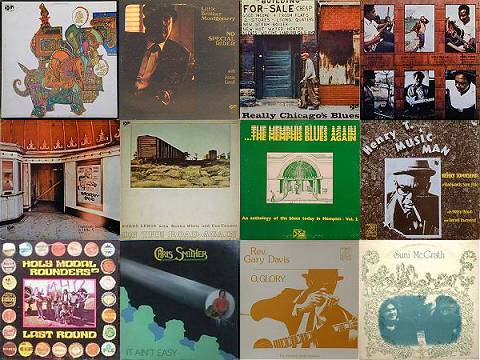
Adelphi Records / Genes Checklist compiled by Klaus Kilian & François Ziegler
 Buy Adephi music at the Adelphi Store
Buy Adephi music at the Adelphi Store


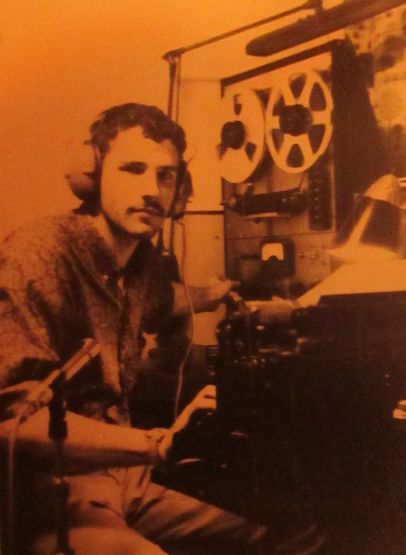



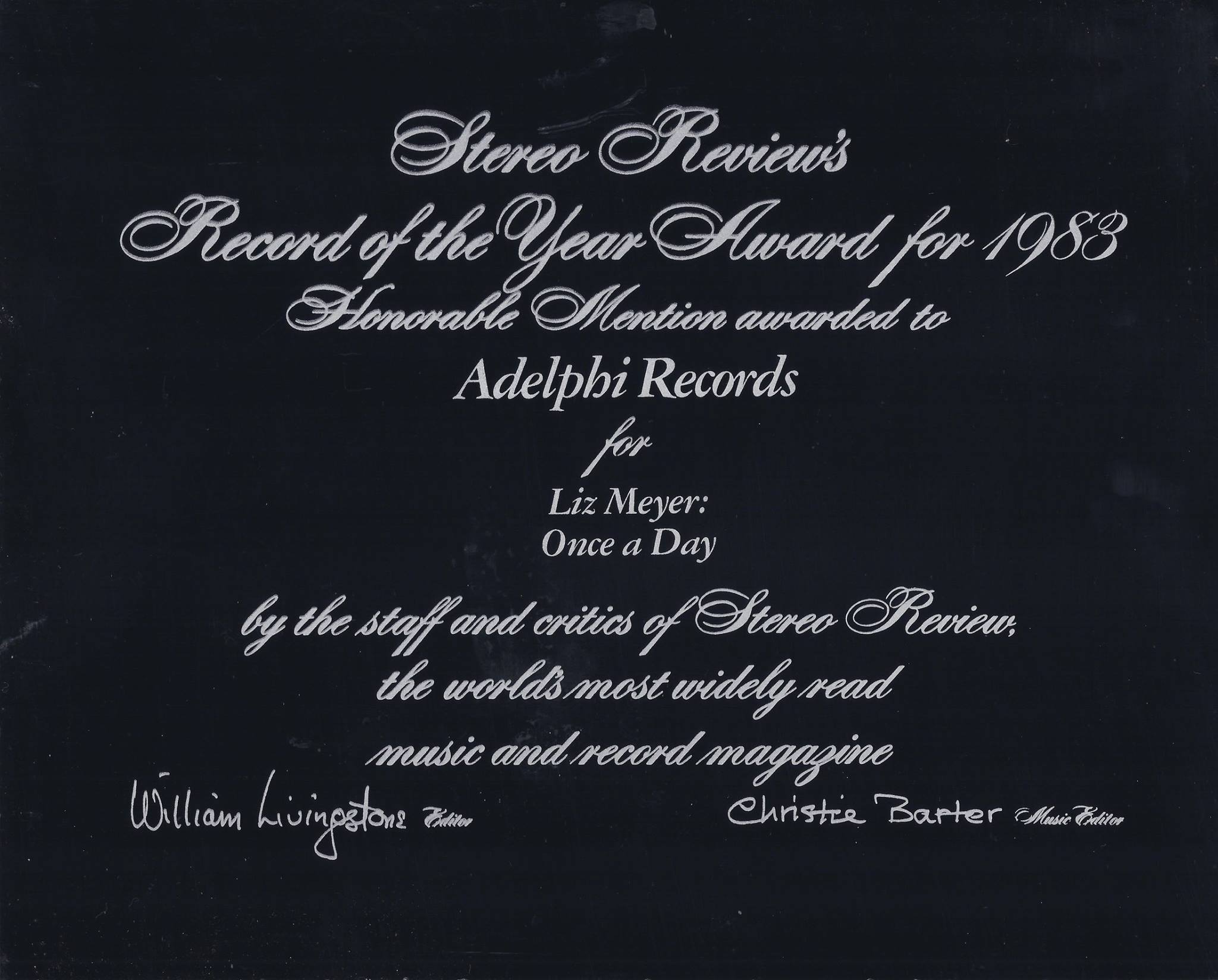










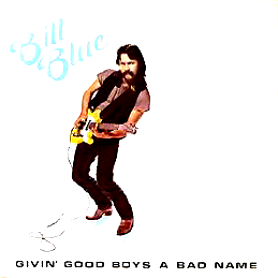
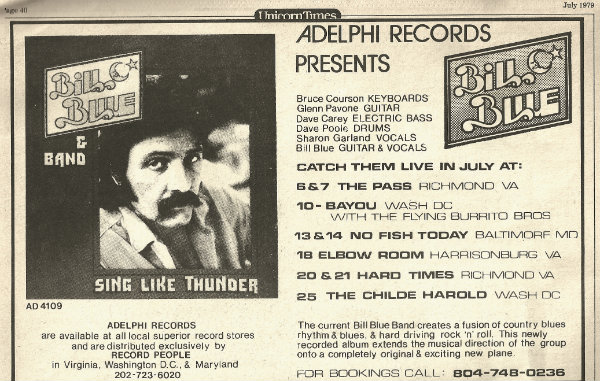










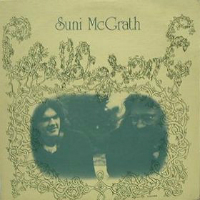


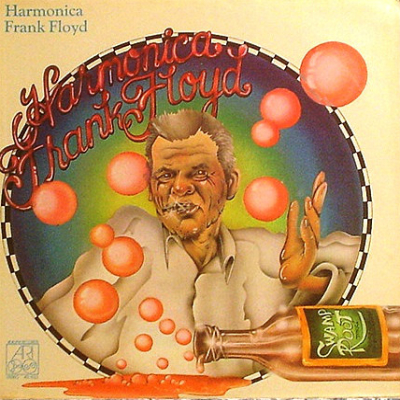


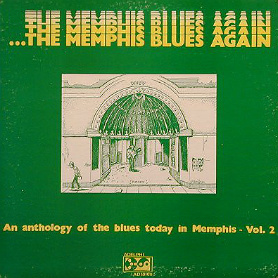
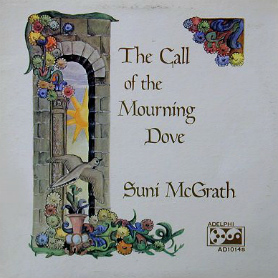

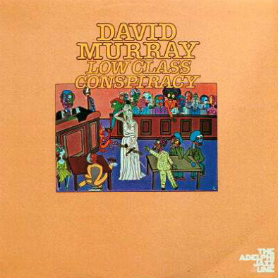
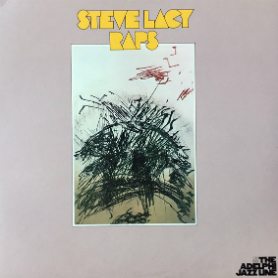



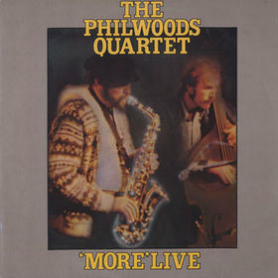



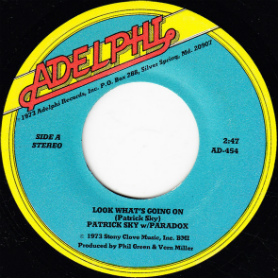
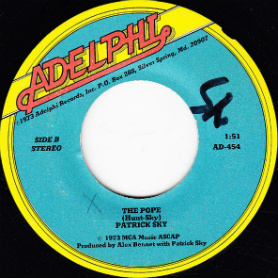








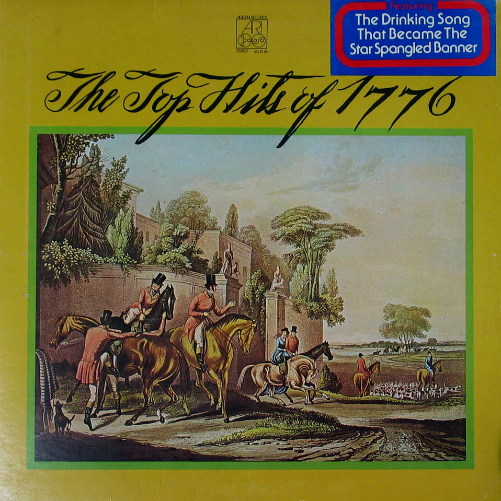
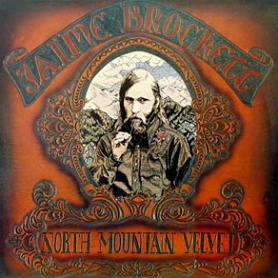




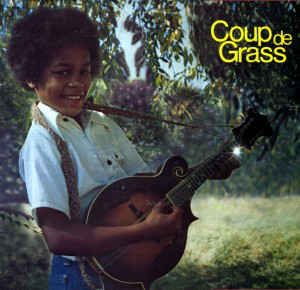

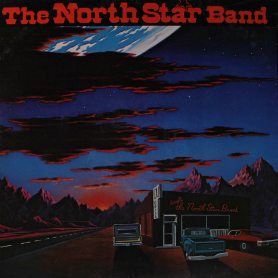









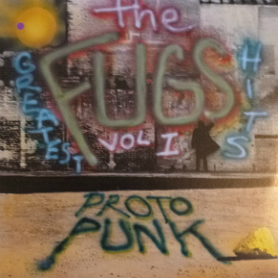
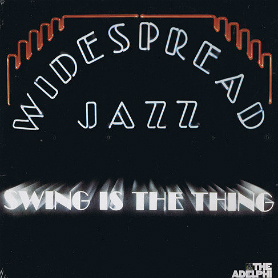


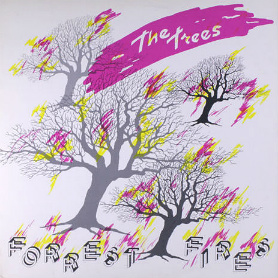
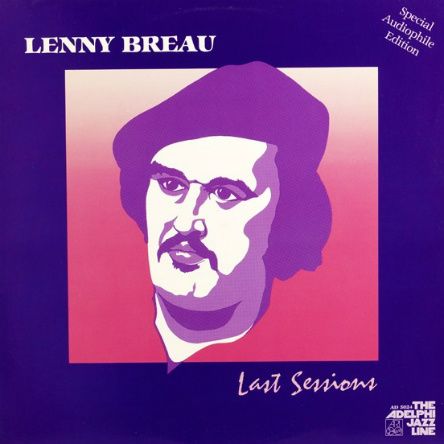






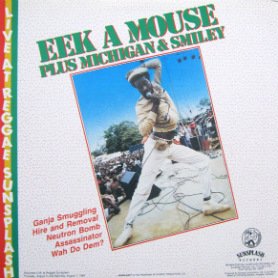
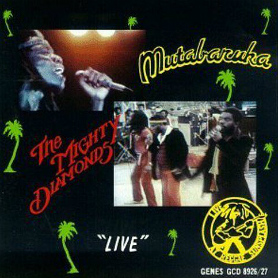

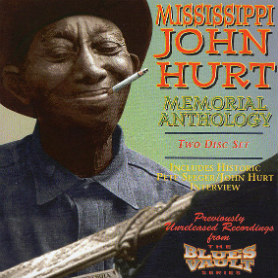



















5 Responses
Ever wonder how you got to have such a spectrum of musical taste? You were lucky enough to grow up in the D.C. area– might have been a reason. Praise be!
Thanks for writing all this up!
This is awesomely special & much appreciated. As a DC native it’s fun to see so much about so many in one place. Well done & thank you thank you thank you
Linda
What a rosy picture you’ve painted. Unfortunately you’ve left out the thorns.